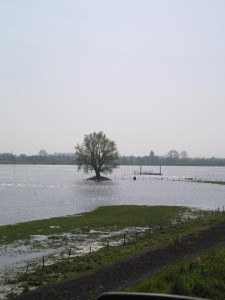Spaces for Landmarks
September 24th, 2009After the successful contest “Landmarks on the water” in 2007 by the Centre for Arts Gelderland which was organized on behalf of the Cultural Pact Riverland (formerly Cultural-Area Riverland), Bureau Venhuizen was commissioned to identify in what way potential new landmarks along the Waal can be established and in what way this could be achieved best.
The beacons for the fairway are the only actually mentioned beacons for the safe passage for sailors. The other beacons we know along the river, such as chimneys, church towers and bridges, where never intended as a beacon in the landscape but where always provided for a reason of their own creation.
Their obvious presence in the landscape over time, these constructions became much more than originally intended, and have become a landmark. For create new landmarks Bureau Venhuizen respect this way of creation. The report ‘Spaces for Landmarks’ contains not the recommendation for new landmarks without any absolute reason. Bureau Venhuizen scouted where at this moment and in the near future changes are in progress. To add these processes at artists, architects and designers, these situations would be strongly developed as a coming landmark.
This report ‘ Spaces for Landmarks’ will identify the potential for new beacons. These possibilities arise in expected but also in unexpected situations. Bureau Venhuizen appointed eleven new species of landmarks. A major new landmark opportunity was already visible by the winner of the contest. He named it Her-Baken (re-landmark); an abandoned brick factory for instance, is reused in a new context and continues its function as a landmark. Along the river Waal the floodplains become increasingly a recreational function whereby the possibility arises for the so-called Struinbaken (roam landmark). Besides, landmarks arise not only from ‘well-seeming’ approaches. New landmarks will also arise from the dredging matters or establish new industrial sites.
‘Spaces for Landmarks’ is no master plan for new beacons. Instead of a master plan this plan argues for a Plan Master. A master plan that cannot always be adjusted is stiff and rigid. Than it can emphasise the one who can review the plan. This is called the Plan master and represents the substantive position of composing the mission. The Plan Master will be established as Bureau Landmark, which can act on a ’strategy of presence’ and will appear within the many transformations along the Waal.
